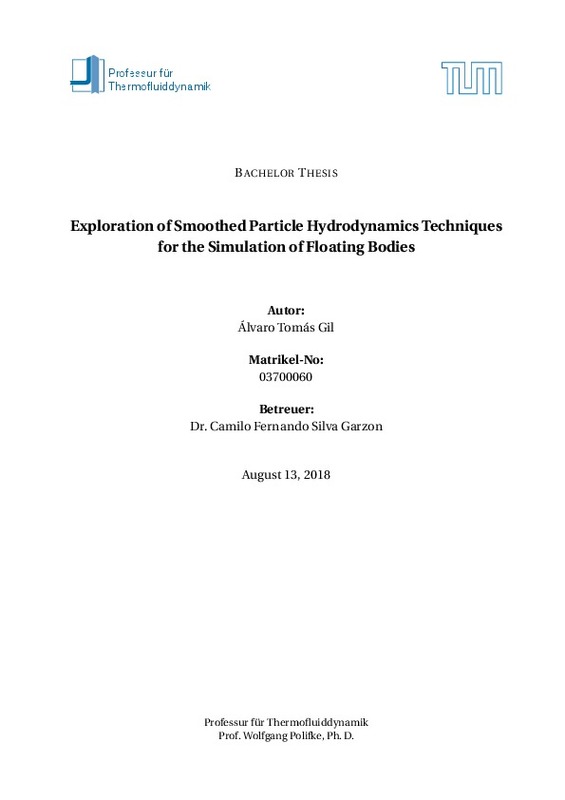|
Resumen:
|
[ES] En este trabajo se realiza un estudio sobre las múltiples técnicas de simulación hidrodinámica basada en SPH, un método computacional para la simulación de fluidos basado en la simulación por partículas. Asimismo, se ...[+]
[ES] En este trabajo se realiza un estudio sobre las múltiples técnicas de simulación hidrodinámica basada en SPH, un método computacional para la simulación de fluidos basado en la simulación por partículas. Asimismo, se trata de implementar la simulación de una superficie libre de agua expuesta a un cuerpo flotante utilizando las técnicas de este método que se consideran más realistas. Una vez implementada dicha simulación en MATLAB, se lleva a cabo un análisis de los resultados obtenidos, teniendo en cuenta la veracidad de la simulación.
[-]
[EN] The development of any reliable scientific simulation requires physically sound assumptions
in order to ensure that the results provided by such simulation tool are as reliable as possible.
Otherwise, the utility ...[+]
[EN] The development of any reliable scientific simulation requires physically sound assumptions
in order to ensure that the results provided by such simulation tool are as reliable as possible.
Otherwise, the utility of the implemented simulation is hindered by the fact that the reality
that it recreates does not correspond with the real case under study. Such is the case of implementations of Smoothed Particle Hydrodynamics (SPH) techniques. Although these simulation methods can provide extremely aesthetically pleasing reproductions of fluid movement,
it is of considerable significance for the engineer employing these methods to ensure that
these recreations are as plausible as possible.
In the case of the simulation of a free fluid surface, one can obtain immensely realistic
results when correctly employing a Lagrangian scheme such as SPH, partly because in Lagrangian flow fields, the fluid is described by observing the individual motion of a fluid parcel
in space and time, thus allowing for a more precise definition of the fluid free surface [2].
This is specially advantageous when compared with Eulerian approaches such as the implementation of the Shallow Water Equations, which require the computation of the free surface
elevation of the fluid for every point of the computational domain [22].
In this manner, the objective of this study is to implement a 2D SPH simulation of a free
fluid surface interacting with a floating body, and to develop this simulation taking into account the significance of the verisimilitude of the results. The plausibility of the obtained
results is observed mainly by analyzing the structure of every component of the simulation
structure in contrast with the relevant sources, and by validating the methods employed with
a standard case scenario.
This report continues by presenting an introduction to the basic principles of SPH and to
the basic structure of any SPH Solver, and by further describing and discussing the form that
each of the components of the simulation has adopted. Within these descriptions of the elements of the simulation, a special depth will be added to the presentation of the methods of
inclusion of the rigid body within the simulation. Later, the results of the simulated cases will
be presented and compared. These same results will later be validated by analyzing the resolution of a specific case scenario involving a floating body, in order to end with an evaluation
of the study as a whole.
[-]
|







